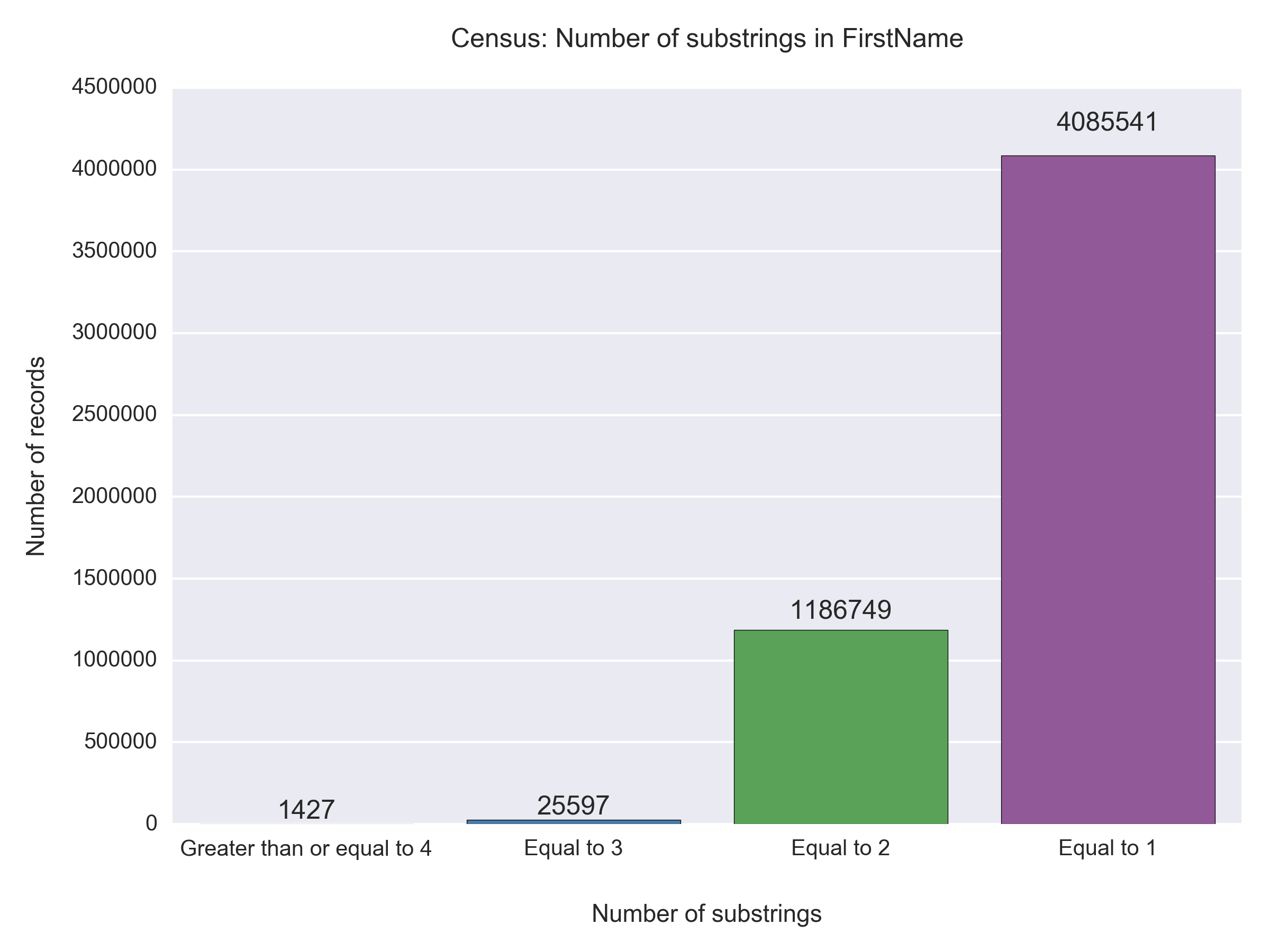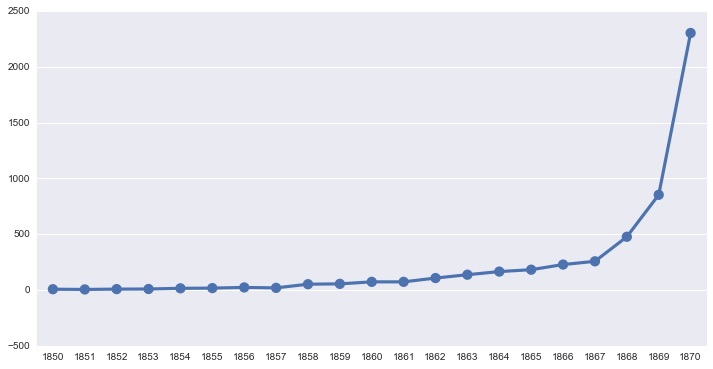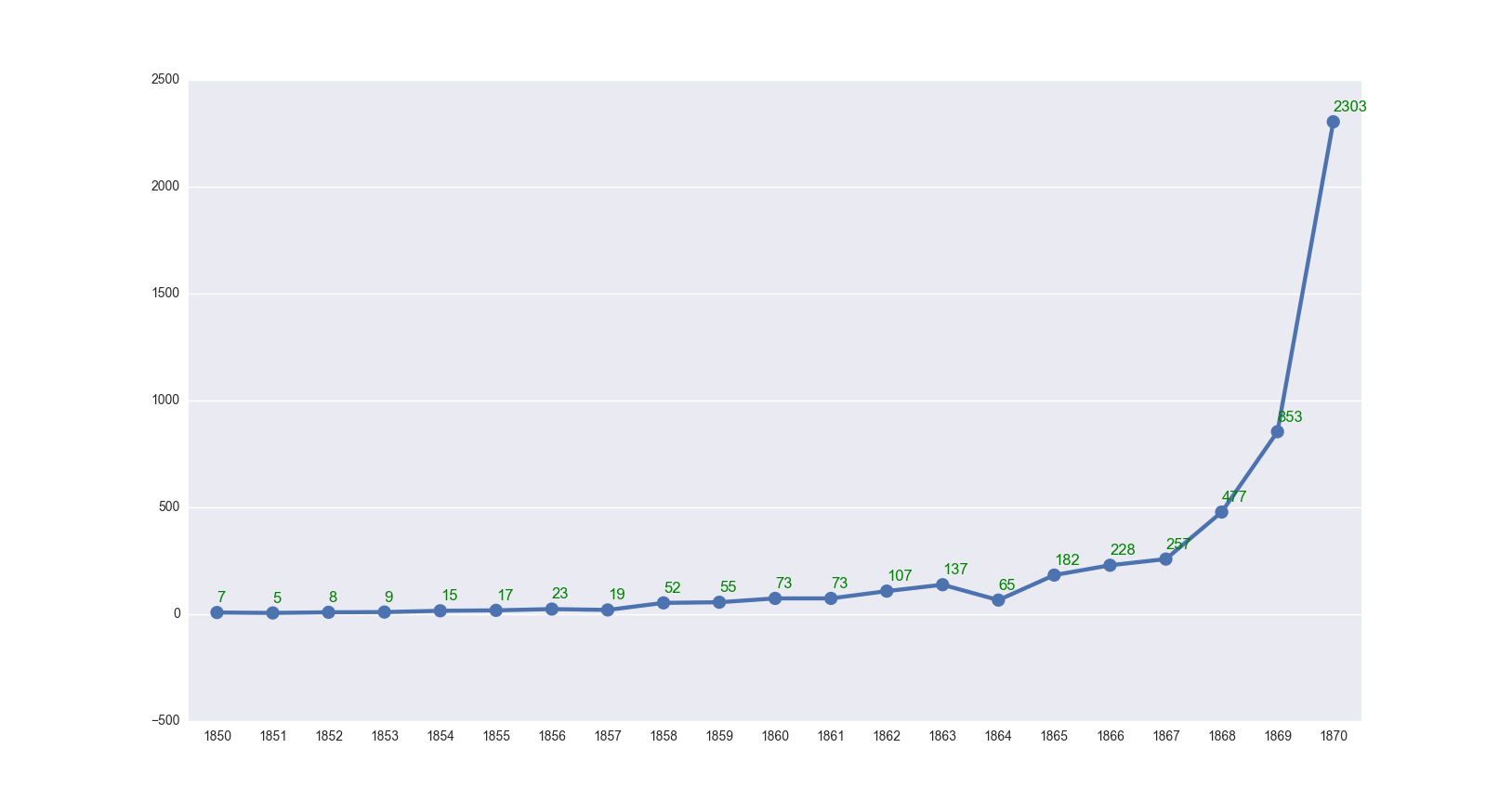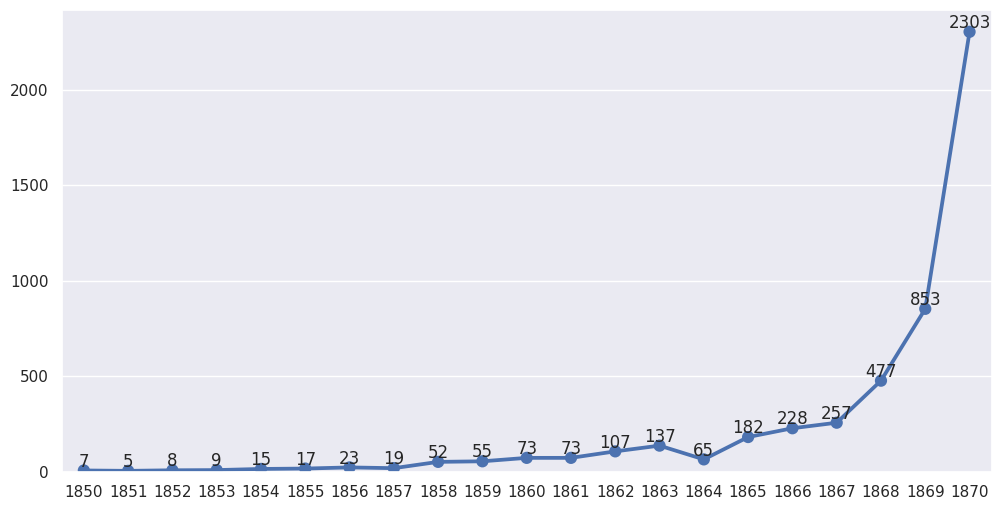I have two arrays like so:
Soldier_years = [1850, 1851, 1852, 1853, 1854, 1855, 1856, 1857, 1858, 1859, 1860, 1861, 1862, 1863, 1864, 1865, 1866, 1867, 1868, 1869, 1870]
num_records_yob = [7, 5, 8, 9, 15, 17, 23, 19, 52, 55, 73, 73, 107, 137, 65, 182, 228, 257, 477, 853, 2303]
I'm trying to get these into a Seaborn pointplot like so:
%matplotlib inline
import seaborn as sns
import matplotlib.pyplot as plt
sns.set(style="darkgrid")
f, (ax) = plt.subplots(figsize=(12, 6), sharex=True)
sns.set_style("darkgrid")
ax = sns.pointplot(x=Soldier_years, y=num_records_yob)
I get a pointplot like so:
This plot is almost what I want. How do I get the data labels of each of the points to show above the respective points?
I tried ax.patches, but it is empty.
I'm trying to get it look like this (but for the pointplot):




